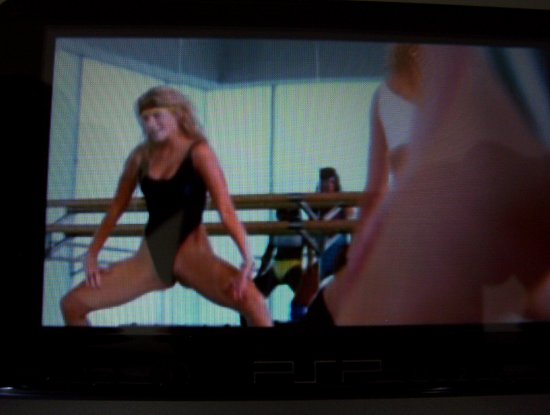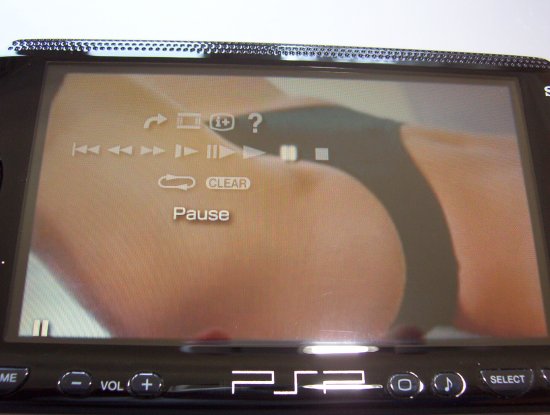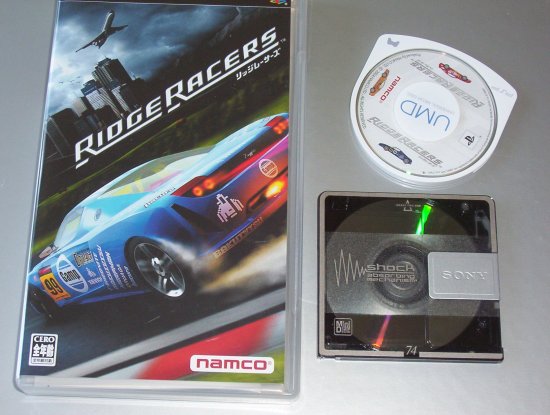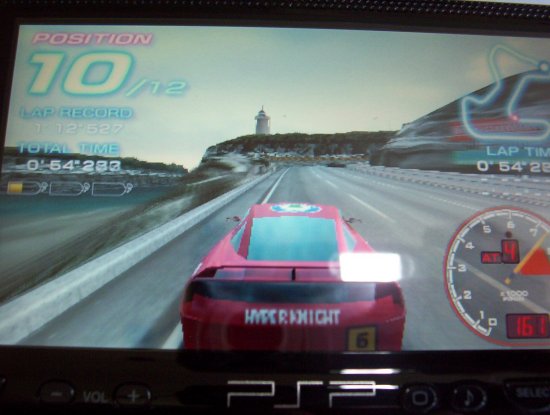Video playback, it’s that screen again
And now we come to the screen… which has to be the key feature of the PSP. As I said earlier, the size of this screen is what dictates the size of the unit overall and, in my opinion, the PSP pushes the limits of what you’d call a ‘pocket’ gaming console. But that is a minor concern when you see what this screen can do. Trust me, the screen quality is far better than these screenshots imply
Trust me, the screen quality is far better than these screenshots implyVideo playback is clean and crisp, with no noticeable sign of ghosting, tearing or afterimage even when showing jump-cuts from light to dark images. The screen button on the front of the PSP switches between three different brightness levels with a fourth level added when you’re running on mains power.
During video playback the action buttons can be used to control screen resolution and playback functions allowing you to easily switch from widescreen to zoomed mode or advance frame by frame or rewind the clip. This is all accessed by an overlay which pops up and is navigated around using the d-pad.
 Video controls are easy to use and erm, very handy… ahem
Video controls are easy to use and erm, very handy… ahemYou may think I’ve been a bit negative towards the PSP due to it’s size which is largely to be blamed on having to accommodate that dirty great big screen. Any reservations I had about the size of the unit were greatly alleviated when I first saw the screen in operation. The image quality is gobsmacking for a unit this size and totally overshadows anything that has gone before… yes, it really is that good.
 Ridge Racers makes full use of the PSP’s capabilities
Ridge Racers makes full use of the PSP’s capabilitiesFor gaming, again I saw no evidence of ghosting, afterimage or tearing, but you’d expect a headline game such as Ridge Racers to have been coded to make full use of the PSP’s abilities and not to show any weaknesses. Comparison with TFT is really a moot point though, as the systems supporting the screens are wholly different. Suffice to say, I don’t see the screen on the PSP being any barrier to what can be done in gaming terms for the future.
 Ridge Racers in action… very impressive, very impressive indeed.
Ridge Racers in action… very impressive, very impressive indeed. A shot from the intro movie… a chick on a car bonnet…that’s just bloke heaven really
A shot from the intro movie… a chick on a car bonnet…that’s just bloke heaven really








